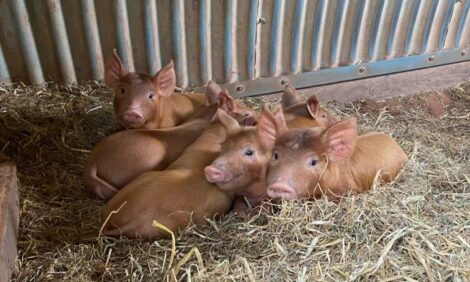



How Do We Unlock The UK Pork Opportunity?
By Rick Sanderson, Pork Chain Business Development Manager, PIC. The current position of UK Pork within the retail sector offers opportunity. There are ways we could improve the consumer and supermarket demand for differentiated 'UK Pork'.What is happening in Society?
In a population of 60 million in the UK, we are increasingly living in single person households. It accounts for 30% of our target market and the sector's growing. A further 35% are 2 person households, which clearly demonstrates that a modern pork product or dish needs to cater for smaller households and their buying habits.
This trend has also led to higher disposable incomes and generally a more demanding consumer. In Britain today we are 2.5 times wealthier than we would have been in the 1960's, and food is generally much cheaper.
For example, in 1963 food was 24.5% of the average household budget, compare that to only 8% in 2006.
What is happening to the UK Retail Market?
Across supermarket categories, choices for consumers are polarising. Core categories are being eroded as shoppers either 'trade up' into premium lines or 'trade down' into value and economy. This leaves a middle void where the consumer is confused about what the product actually delivers for them - and it's to this void that we market 80%+ of UK Fresh Pork.
In 2006 the 'Premium' tier across our supermarkets grew by 50%, and 'Value' saw growth of a further 25%. Unfortunately pork is not even moving ahead at the level of total grocery spend. And this highlights further that a strategic approach is needed to target our desired market and produce to its requirements.
A Targeted Approach
An interesting approach to marketing pork product is to first understand who the 'Fresh Meat Shopper' actually is. Market segmentation is key in the modern retail world. A targeted approach to specific consumer needs has allowed other products, such as cheese, to race ahead in terms of meeting consumer needs.
We can split our 'Fresh Meat Shopper' into 6 core categories, marketing speak calls this 'clustering'. For meat we have the following classifications;
- Value Chasers - Wants 'good enough' quality, but at the right price
- Foodies - Cooks with meat on a regular basis and quality is an absolute priority
- Budget Balancers - Will often buy whatever meat is on promotion
- Young and clue less - Views pork as 'old fashioned' and worries how to cook it
- Time Short, Cash Rich - Preparation is a chore, pork is 'out of comfort zone'
- Traditionalists - Knowledgeable, buys roasts as a treat, quality at right price
- Family Meal Makers - Older families were mum still cooks, Celebrity Chef led
UK Standard Pork from the consumer perspective
PIC recently recruited 'Standard Pork' consumers and presented them with several samples of product, along with more specific surveys covering buying behaviour.
The qualities they most enjoyed in pork were moistness, juiciness, tenderness, lack of chews etc. Flavour was of course of value, but principally it was an eating quality akin to a chicken breast that they were striving for. In most cases, they were making a clear choice when they purchase meat between a chicken breast or a pork chop or steak.
They didn't see the relevance of fat covering on pork chops, it certainly did not support the health agenda that a large proportion of our shoppers had. In almost all cases our consumers preferred product that had been heavily trimmed, had the longest sell by date, and was of a certain colour in terms of influencing pick up in the first instance.
According to Ed Garner, Global Communications Director at market research company TNS, "Standard pork looks unappealing, it has the perception of being a 'fatty meat', and worst of all there is no 'story' around standard pork. Why should I buy standard pork? I have story of health and provenance in other tiers, so why not here?"
So in summary, there is a great opportunity for UK Standard Pork if we get the offer right, both in terms of cost price, incentives for pick-up in store, and quality traits of value to the end consumer. There is much PIC can offer from a genetic standpoint to satisfy these needs, and working as part of an industry with a clear focus we can help deliver pork that is relevant to the modern consumer.







